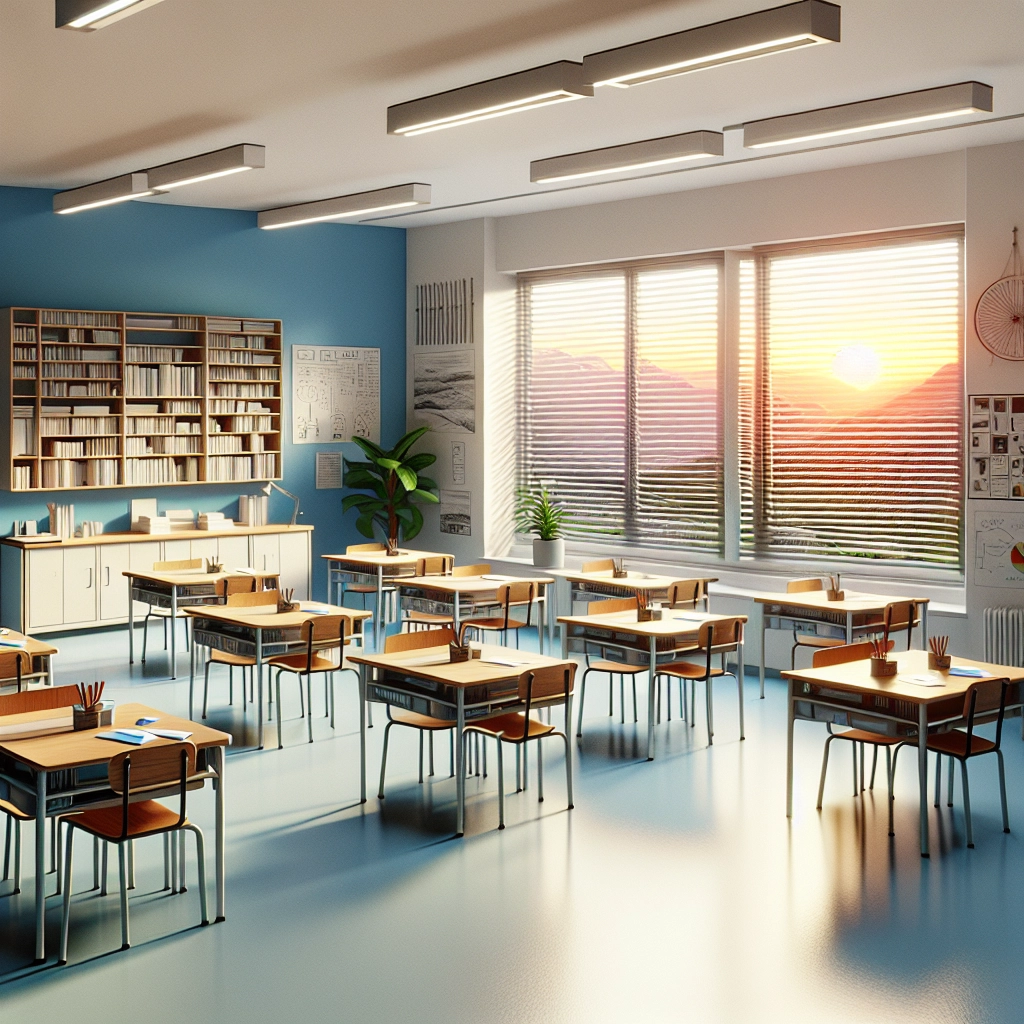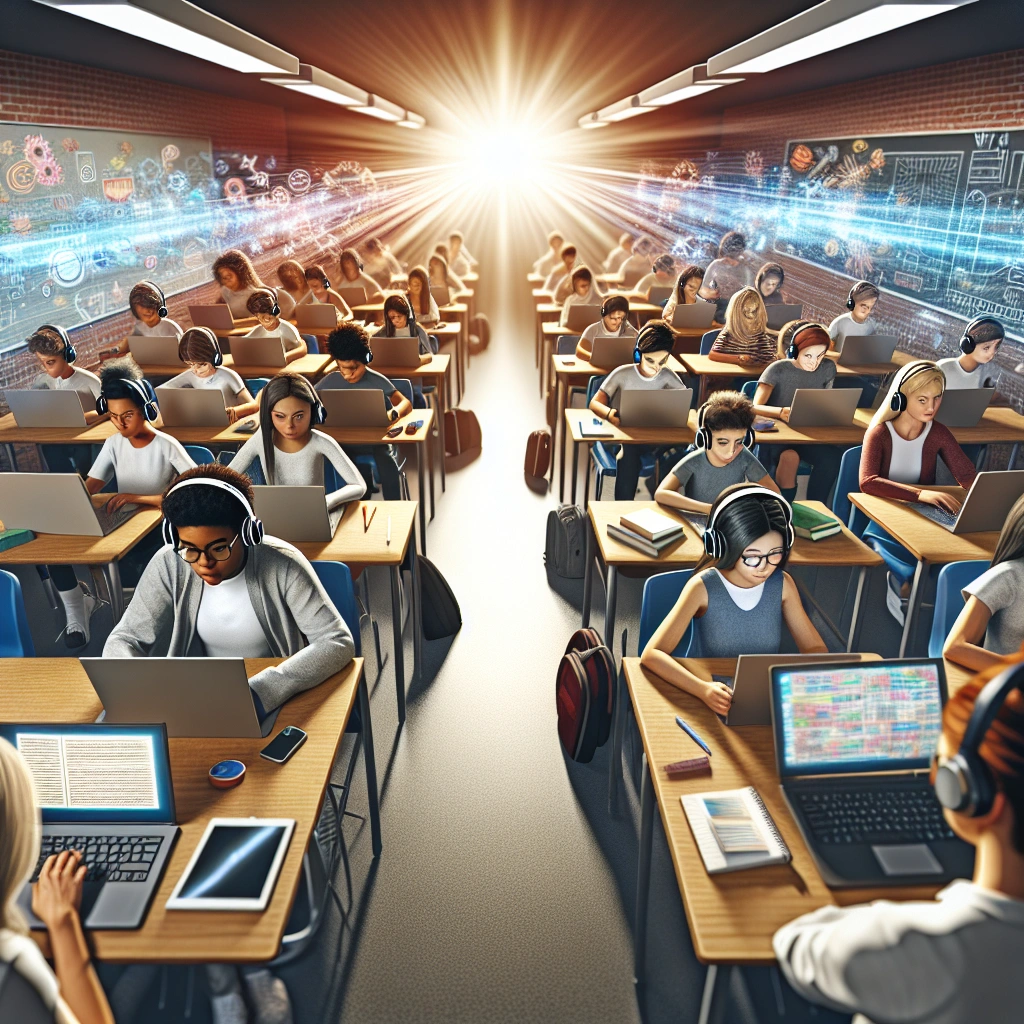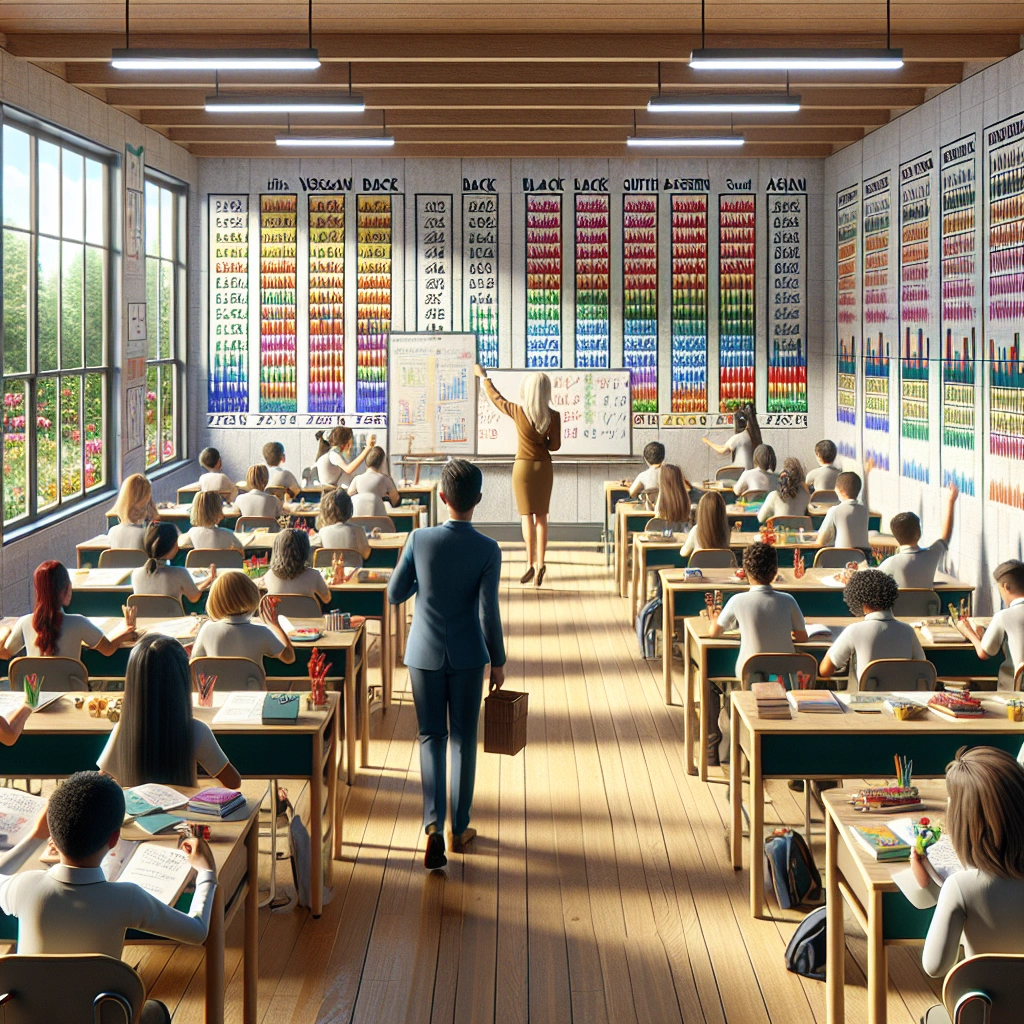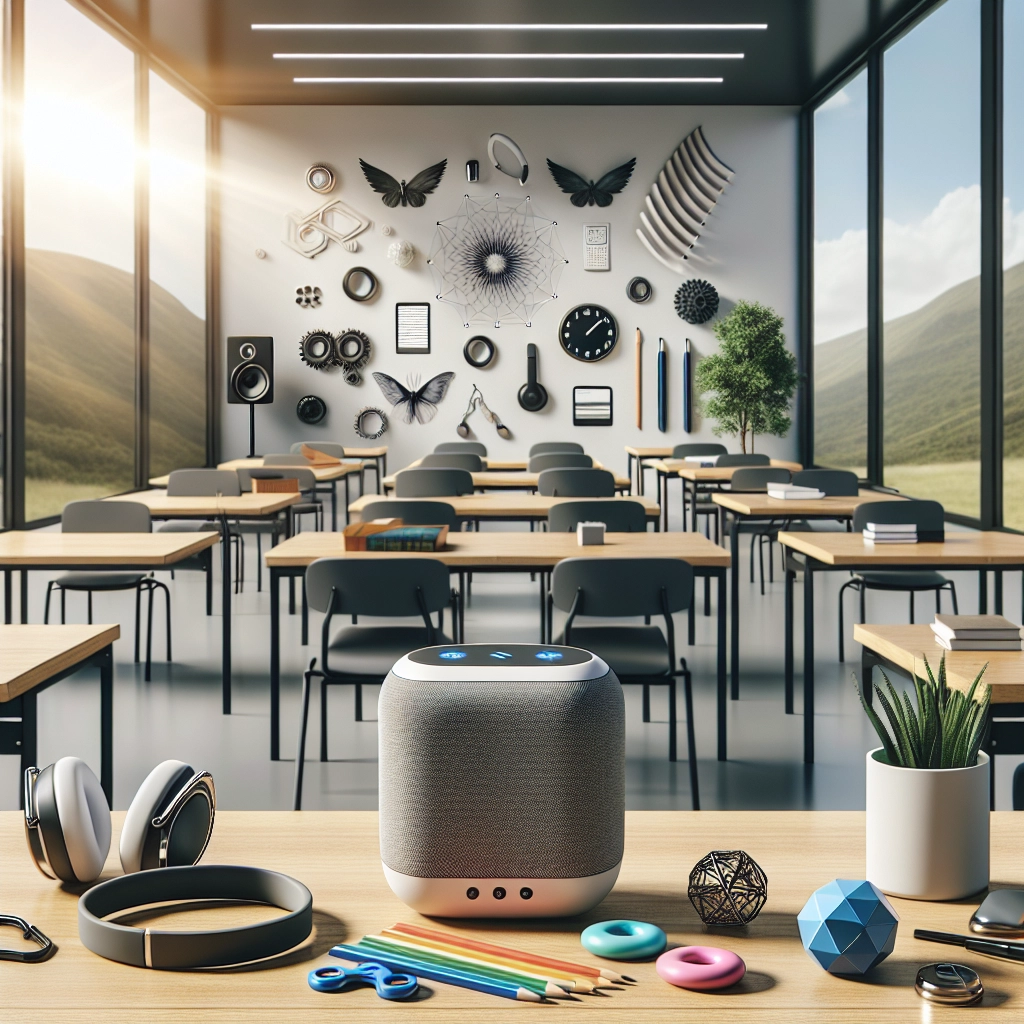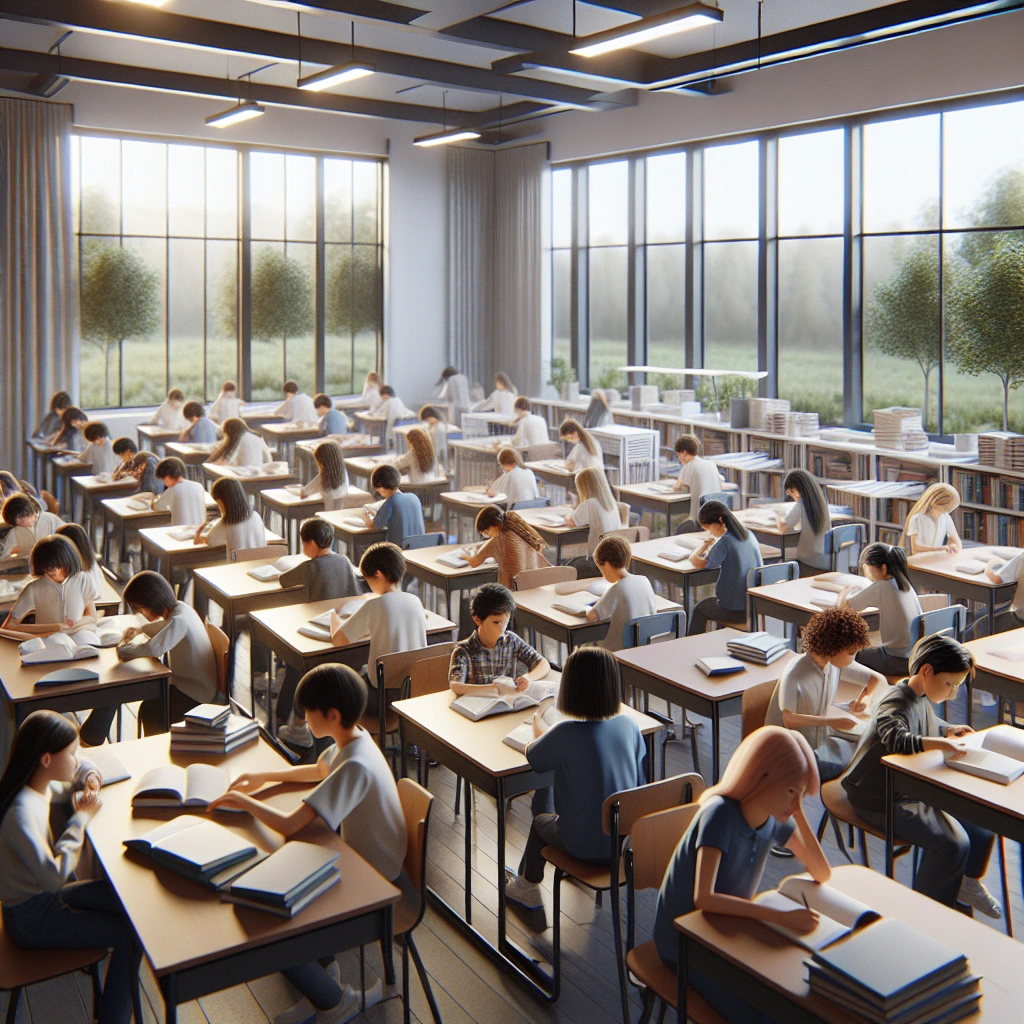What Are The Most Effective Strategies For Minimizing Distractions In School


Distractions in the school setting refer to things that divert students’ attention away from learning. These distractions can have a negative impact on students’ ability to focus, retain information, and perform well academically.
Personal devices, unnecessary talking, eating in class, tardiness, lack of organization, and technology are some common distractions in the classroom.
In order to minimize distractions in school, effective strategies include setting clear boundaries and expectations for device use, implementing rules for respectful communication during class, and establishing guidelines for eating and tardiness. In addition, promoting organization and time management skills among students, and providing a well-structured learning environment can help reduce distractions.
It is also important for educators to be aware of the potential impact of technology and to develop strategies to address its influence on student distraction.
By implementing these effective strategies for minimizing distractions in school, educators can create a conducive learning environment, where students can focus, engage, and perform to their best ability academically.
Check out this YouTube video: Learn the most effective strategies for minimizing distractions in school with these 7 proven ways to prevent distractions while working or studying!
Understanding the Causes of Distractions in School
Common sources of distractions in the classroom
The classroom environment is often rife with distractions that hinder students’ focus and engagement. Personal devices, such as cell phones and handheld games, are notorious for diverting students’ attention, leading to missed learning opportunities.
Unnecessary talking within the classroom not only disrupts the teacher’s lesson but also distracts fellow students, impacting their ability to concentrate. Additionally, students eating food or chewing gum during class can create distractions, as can tardiness, which results in valuable material being missed.
Even seemingly innocent activities like YouTube and class activities can pose distraction risks.
The role of technology in contributing to distractions
While technology has transformed education, it also presents significant distraction risks. Devices like smartphones and school-issued laptops can divert students’ attention through notifications, messages, and engaging in non-educational activities.
Research indicates that the mere presence of electronic devices can reduce students’ cognitive capacity, affecting their ability to focus and engage effectively. Therefore, while technology can enhance engagement and collaboration, it also demands vigilance to prevent it from becoming a distraction that impedes learning.
Effects of environmental factors on student focus
Environmental factors play a pivotal role in shaping students’ focus and learning experiences. Factors such as luminosity of light, noise intensity, and proximity to the instructor can significantly impact students’ ability to concentrate.
For instance, noise and movement in close-seating arrangements can disrupt focus, while access to greenery and natural light can foster a more conducive learning environment. Surroundings at home also influence the learning process, with factors like family size and the presence of supportive environments or adverse conditions directly impacting a student’s ability to learn effectively.
| Distraction Factor | Impact |
|---|---|
| Personal Devices | High |
| Unnecessary Talking | Medium |
| Eating or Chewing Gum | Medium |
| Tardiness | High |
| YouTube | Low |
| Class Activities | Low |
Understanding and addressing common sources of distractions in the classroom, the role of technology in contributing to distractions, and the effects of environmental factors are imperative in devising effective strategies for minimizing disruptions and enhancing student focus.
Remember, distractions hinder learning – let’s work together and make our classrooms distraction-free to help our students thrive!
The Importance of Minimizing Distractions in School
The link between reduced distractions and improved academic performance is undeniable. When students are able to focus on their studies without being constantly interrupted, their ability to comprehend and retain information significantly increases.
Studies have shown that distractions, especially from technology, can have a detrimental impact on long-term retention, leading to lower scores in exams and decreased academic achievement.
Benefits of creating an environment conducive to learning
Creating an environment conducive to learning comes with numerous benefits. A positive psychosocial school environment promotes effective teaching and learning, fostering engagement, support, and better academic outcomes.
A structured classroom with minimal noise and distractions allows students to stay on task and remain engaged, ultimately leading to improved learning experiences and enhanced academic performance.
| Strategies for Minimizing Distractions |
|---|
| 1. Provide a structured learning environment |
| 2. Minimize noise and other distractions |
| 3. Implement seating arrangements conducive to focus |
| 4. Utilize educational learning theories for optimal environments |
| 5. Employ positive psychology in the classroom for engagement |
| 6. Utilize the psychosocial school environment to create conducive spaces |
By implementing these strategies, schools can create an environment that minimizes distractions, enhances student engagement, and maximizes academic performance.
Effective Classroom Management Techniques
Establishing clear expectations for behavior and focus
Establishing clear behavior expectations is vital to minimizing distractions in the classroom. Clearly communicate rules and expectations in a positive manner, focusing on what students should do rather than what they should not do. For example, instead of saying, “No cell phones during class,” phrase it as, “We will pay attention while others are speaking.” This approach helps set a positive tone and creates a conducive learning environment.
Implementing seating arrangements to minimize distractions
Arranging students in a horseshoe or circle promotes a collaborative environment, ideal for group work and discussions while minimizing distractions. Additionally, studies have shown that seating students in rows is the most effective arrangement for keeping them focused on the task at hand.
This seating layout minimizes distractions and helps maintain a productive learning atmosphere.
Utilizing attention-getting strategies to bring focus back to the classroom
Incorporating attention-getting strategies, such as the “Give Me Five” technique, can effectively redirect students’ focus. Using physical signals, like raising a hand, helps regain students’ attention while providing them with an opportunity to work together to refocus.
Additionally, incorporating brief breaks for physical activity and mindfulness practices can enhance students’ attention and concentration, reducing distractions in the classroom.
Implementing Technology Policies
Establishing guidelines for technology use during instructional time
To establish effective guidelines for technology use during instructional time, schools can implement a structured approach that integrates technology into the curriculum. This can involve setting specific times for technology use, such as during designated class periods or for specific educational activities.
Teachers and educators can also create clear expectations for student behavior and engagement during technology use, ensuring that it aligns with academic objectives.
Providing alternatives to technology for educational purposes
In addition to technology integration, providing alternatives to technology for educational purposes is essential. This can include incorporating hands-on activities, group discussions, and project-based learning to offer diverse learning experiences.
Schools can also promote traditional teaching methods and materials, such as textbooks and physical resources, to create a balanced educational environment that caters to individual learning preferences.
Teaching Strategies to Minimize Distractions
Incorporating interactive and engaging activities is key to maintaining student interest and minimizing distractions in school. By using educational games, quizzes, and interactive tasks, students remain engaged and focused on the learning material.
For example, teachers can implement educational platforms that offer interactive learning games tailored to the curriculum, encouraging students to apply their knowledge in a fun and engaging manner.
Using active learning techniques is another effective strategy for promoting focus and participation in the classroom. This involves incorporating hands-on activities, group discussions, and problem-solving tasks to actively involve students in the learning process.
For instance, organizing group brainstorming sessions or interactive experiments in science classes can significantly enhance student engagement and minimize distractions by keeping them actively involved in the educational content.
Encouraging movement and physical activity among students can greatly improve their attention span and contribute to minimizing distractions. Incorporating brief movement breaks or physical exercises during lessons can help students release excess energy, improve blood flow, and enhance their ability to concentrate.
For instance, incorporating short stretching exercises or outdoor activities during breaks can help students re-energize and focus better when they return to the classroom.
| Strategy | Example |
|---|---|
| Incorporating interactive activities | Integrate educational games and quizzes into the curriculum to keep students engaged and focused. |
| Using active learning techniques | Organize group discussions and hands-on activities to actively involve students in the learning process. |
| Encouraging movement and physical activity | Implement brief movement breaks and physical exercises to help students release energy and improve focus. |
By implementing these strategies, educators can create an environment that minimizes distractions, fosters active participation, and enhances student learning experiences.
Creating a Supportive Learning Environment
Fostering positive relationships between students and teachers
Developing a strong bond between students and teachers is crucial for creating a supportive learning environment. Active listening and showing genuine interest in students’ experiences can foster a sense of trust and belonging.
For instance, addressing students by their names and acknowledging their personal achievements can significantly enhance the teacher-student relationship.
Utilizing classroom design to reduce distractions
Strategic classroom design plays a vital role in minimizing distractions. Organizing desks in a way that promotes collaboration while minimizing visual and auditory interruptions can boost students’ focus.
Additionally, incorporating designated areas for quiet individual work and utilizing noise-cancelling materials can further mitigate distractions and improve overall concentration.
Providing resources for students who may struggle with attention and focus
Offering resources tailored to students with attention challenges is essential. Providing access to adjustable seating, noise-canceling headphones, and visual schedules can help students manage sensory stimuli and stay focused.
Furthermore, implementing mindfulness and relaxation techniques can support students in regulating their attention and maintaining focus throughout the learning process.
Time Management Techniques for Students
Teaching students effective time management skills:
One of the most effective time management skills to teach students is prioritization. By helping them identify the most crucial tasks and organizing them in order of importance, students can allocate their time efficiently.
Providing tools and resources to help students stay organized:
Equipping students with digital or physical planners can significantly aid their organization. These tools enable them to break down tasks, set deadlines, and track their progress, promoting a more structured and organized approach to their responsibilities.
Setting realistic goals and expectations for completing tasks:
Encouraging students to set SMART goals – specific, measurable, achievable, relevant, and time-bound – assists in establishing realistic expectations for task completion. By guiding them to create actionable plans, students can approach their tasks with clarity and purpose.
Collaboration between Teachers and Parents
Communicating the importance of minimizing distractions to parents
One effective strategy is to initiate open and transparent communication with parents about the impact of minimizing distractions on their child’s learning. By sharing specific examples of how distractions can hinder student focus, parents can better understand the importance of creating a conducive environment for learning.
Additionally, providing resources and practical tips for parents to support their children in managing distractions at home can further reinforce the significance of this issue.
Seeking support from parents in maintaining a focus-friendly home environment
It’s crucial to collaborate with parents in establishing a focus-friendly home environment by involving them in creating a structured and conducive space for learning. Encouraging parents to limit screen time, designate study areas, and establish consistent routines can significantly contribute to minimizing distractions at home.
Seeking their input and involvement in implementing these strategies can empower parents to take an active role in maintaining a conducive environment for their children’s academic focus.
Working together to address individual student needs and challenges
By fostering a partnership between teachers and parents, it becomes possible to identify and address individual student needs and challenges associated with distractions. Regular communication and feedback exchanges can provide valuable insights into students’ unique learning behaviors and potential distractions they encounter.
Collaboratively devising tailored strategies to mitigate these challenges enables a proactive approach to support each student in managing distractions effectively.
| Collaboration Methods | Description |
|---|---|
| Open Communication | Engage in dialogues with parents about the impact of distractions on their child’s learning. |
| Resource Sharing | Provide parents with resources and practical tips to support minimizing distractions at home. |
| Involving Parents | Seek input and involvement from parents in creating a focus-friendly home environment. |
| Tailored Strategies | Collaboratively devise personalized approaches to address individual student distractions. |
Promoting Mindfulness and Mental Health
Incorporating mindfulness practices into the school day
Mindfulness practices in schools can include short, regular sessions focused on promoting self-awareness and managing emotions. For instance, incorporating brief mindfulness exercises at the beginning of each class can help students calm their minds and enhance their focus.
Additionally, schools can introduce meditation or yoga sessions as part of physical education to promote mental well-being and reduce stress levels.
Providing resources for managing stress and anxiety
Schools can provide resources for managing stress and anxiety by offering access to counseling services, creating safe spaces for students to share their feelings, and organizing workshops on stress management techniques. By collaborating with mental health professionals, schools can develop programs that address the specific stressors students face and provide practical tools for coping with anxiety.
Offering access to online resources and apps that focus on relaxation and mindfulness can also be beneficial.
Recognizing the impact of mental health on attention and focus
Recognizing the impact of mental health on attention and focus involves creating a supportive environment where students feel comfortable expressing their struggles. Educators can implement strategies to accommodate students with mental health challenges, such as allowing flexible deadlines or providing quiet spaces for studying.
By raising awareness about the connection between mental health and academic performance, schools can foster empathy and understanding among students and faculty.
| Effective Strategies | Examples |
|---|---|
| Incorporate mindfulness exercises at the beginning of each class | Short meditation sessions to center students’ focus |
| Provide access to counseling services and workshops on stress management | Collaborate with mental health professionals to develop tailored programs |
| Create a supportive environment for students with mental health challenges | Adapt teaching methods to accommodate individual student needs |
Promoting mindfulness and mental health in schools requires a holistic approach that includes incorporating regular mindfulness practices, providing accessible resources for managing stress and anxiety, and recognizing the impact of mental health on student attention and focus. By prioritizing students’ well-being, schools can create an environment where students feel supported, empowered, and equipped to navigate the challenges of academic life effectively.
Addressing Special Populations
Strategies for minimizing distractions for students with learning disabilities
The strategies for minimizing distractions for students with learning disabilities involve creating a structured environment with clear instructions and visual aids to help them focus. Additionally, employing multi-sensory teaching methods can enhance their engagement and understanding.
Accommodations for students with attention-related challenges
Accommodations for students with attention-related challenges include providing preferential seating, organizing tasks into manageable segments, and allowing movement breaks to help them regain focus. Using noise-canceling headphones and reducing visual clutter can also aid in minimizing distractions.
Providing individualized support for students who struggle with focus
To provide individualized support for students who struggle with focus, personalized learning plans and frequent check-ins can be beneficial. Implementing specific tools such as fidget items, sensory cushions, or visually structured schedules can cater to their unique needs and improve their ability to concentrate.
| Strategies for Minimizing Distractions | Accommodations for Attention-Related Challenges | Individualized Support for Focus Struggles |
|---|---|---|
| 1. Structured environment and visual aids | 1. Preferential seating and task segmentation | 1. Personalized learning plans and check-ins |
| 2. Multi-sensory teaching methods | 2. Movement breaks and noise-canceling headphones | 2. Use of fidget items and sensory cushions |
These tailored approaches aim to minimize distractions and create an inclusive learning environment for students with diverse needs, fostering their academic success and overall well-being.
Incentive Programs and Positive Reinforcement
Implementing reward systems for maintaining focus and attention
Implementing reward systems in school can be a great way to maintain focus and attention among students. For instance, setting up a points-based reward system where students earn points for staying focused during class, participating actively, and completing their tasks on time can be highly effective.
These points can then be redeemed for small rewards such as stationary, books, or even extra free time. Such tangible incentives can significantly motivate students to stay focused and minimize distractions.
Utilizing positive reinforcement to encourage desirable behaviors
Positive reinforcement plays a crucial role in encouraging desirable behaviors in students. By praising and acknowledging students’ efforts to minimize distractions, educators can create a positive learning environment.
For example, verbal affirmations, certificates of achievement, or public recognition in class can help reinforce the desired behavior. Positive reinforcement not only motivates students to stay focused but also cultivates a culture of encouragement, ultimately leading to improved academic performance.
Creating a culture of recognition for student efforts in minimizing distractions
Creating a culture of recognition for student efforts in minimizing distractions is essential for sustaining a positive learning environment. Schools can organize monthly or quarterly award ceremonies to acknowledge students who have consistently demonstrated focused behavior.
Additionally, implementing a “student of the week” program can spotlight individuals who have excelled in maintaining attention during lessons, further inspiring their peers to follow suit. By showcasing and celebrating students’ efforts in minimizing distractions, schools can foster a sense of pride and achievement among the student body.
Training and Support for Educators
Professional development on effective classroom management strategies
One of the most effective strategies for minimizing distractions in school is to provide professional development on effective classroom management strategies. Educators can benefit from training sessions on behavior management, creating engaging lesson plans, and implementing effective communication techniques.
By sharpening these skills, teachers can proactively address distractions in the classroom and create a conducive learning environment.
Tools and resources for teachers to address distractions in the classroom
Equipping teachers with tools and resources to address distractions is crucial. Implementing technology monitoring software, establishing clear classroom expectations, and utilizing interactive learning materials can help in managing and minimizing distractions.
For example, using educational apps and digital platforms can engage students and reduce disruptive behaviors, contributing to a more focused learning environment.
Creating a supportive network for educators to share best practices
Building a supportive network for educators to share best practices is essential for addressing distractions in school. Teachers can collaborate through interdisciplinary teams, coordinate policies and procedures, and share effective classroom management techniques.
Moreover, utilizing online platforms such as blogs, webinars, and social media can facilitate widespread knowledge sharing and showcase successful strategies for minimizing distractions in the classroom.
Creating a Culture of Respect and Responsibility
Fostering a sense of responsibility for individual focus and behavior
Encouraging students to take ownership of their focus and behavior fosters a sense of responsibility. This can be achieved through setting clear expectations and providing students with the tools to self-regulate their behavior.
Educating students on the impact of distractions on their own learning
Educating students about the negative impact of distractions on their learning is crucial. By demonstrating the correlation between focus and academic performance, students can better understand the importance of minimizing distractions in their learning environment.
Promoting a culture of respect for one another’s learning environment
Promoting a culture of respect for each other’s learning environment creates a positive and supportive atmosphere. This can be achieved through fostering open dialogue, encouraging active listening, and teaching conflict resolution skills to ensure a harmonious educational setting.
Evaluating and Adjusting Strategies
Utilizing data and feedback to assess the effectiveness of implemented strategies
To assess the effectiveness of implemented strategies, it’s crucial to gather quantitative and qualitative data. This could involve analyzing academic performance, attendance records, and behavior patterns.
For example, tracking students’ comprehension levels through regular assessments and feedback can provide valuable insights into the impact of implemented strategies.
Making necessary adjustments based on the specific needs of the student population
After evaluating the data and feedback, it’s essential to tailor adjustments based on the specific needs of the student population. For instance, if the data indicates that a particular group of students struggles with attention, implementing targeted interventions like specialized classroom arrangements or individualized accommodations can make a significant difference in minimizing distractions.
Continuous improvement to maintain a focus-friendly school environment
Continuous improvement is key to sustaining a focus-friendly school environment. This involves an ongoing cycle of identifying areas for enhancement, testing interventions, and measuring their impact.
For instance, ongoing professional development for educators, regular reassessment of student needs, and updating of teaching strategies based on feedback ensure that the school environment remains conducive to maintaining focus.
Recommended Amazon Products for Minimizing Distractions in School
Here’s a curated list of products that can help you minimize distractions in school with ease. These recommendations are based on functionality, price, and reviews.
Noise Cancelling Headphones
Noise cancelling headphones are a great way to help students stay focused in a noisy classroom environment. These headphones can block out distractions and create a conducive learning atmosphere.
Pros and Cons
Here’s a table comparing the pros and cons of noise cancelling headphones:
| Pros | Cons |
|---|---|
| Blocks out background noise | Can be expensive |
| Helps improve concentration | Some students may find them uncomfortable |
| High-quality sound for listening and learning | Requires access to electronic devices |
Focus Fidget Toys
Focus fidget toys are designed to help students channel their nervous energy or fidgeting into a quiet, tactile activity that can improve focus and attention.
Pros and Cons
Here’s a table comparing the pros and cons of focus fidget toys:
| Pros | Cons |
|---|---|
| Tactile stimulation promotes focus | May be distracting for some students |
| Can help reduce anxiety and stress | Should be used discreetly to avoid disruption |
| Portable and discreet for classroom use | Some students may not find them effective |
Top Recommended Product for Minimizing Distractions in School
If you’re looking for the best solution for minimizing distractions in school, we highly recommend Noise Cancelling Headphones (https://www.amazon.com/s?k=noise+cancelling+headphones). Here’s why:


Noise cancelling headphones are a versatile solution for creating a focused learning environment. They are effective in blocking out distractions and have the potential to improve student academic performance by reducing the impact of environmental noise.
Ready to improve your classroom focus? Check out Noise Cancelling Headphones (https://www.amazon.com/s?k=noise+cancelling+headphones) today for the best results!


Conclusion
The most effective strategies for minimizing distractions in school include creating a designated study space that is quiet and free from disruptions, such as a library or study room. Additionally, setting specific times for focused study sessions can help students stay on track and minimize the temptation to engage in distracting activities.
Finally, utilizing time management techniques such as breaking tasks into smaller, manageable chunks can help students stay organized and focused on their studies.
Furthermore, practicing good digital hygiene by limiting the use of electronic devices during study time and using apps or tools that block distracting websites can also help minimize distractions in school. Additionally, establishing clear and realistic goals for each study session can provide students with a sense of purpose and motivation, helping them to stay focused and avoid distractions.
Finally, seeking support from teachers, parents, or peers can provide students with the encouragement and guidance they need to stay focused and minimize distractions in school.
By implementing a combination of strategies such as creating a designated study space, practicing good digital hygiene, utilizing time management techniques, and seeking support from others, students can effectively minimize distractions in school and improve their academic performance.


